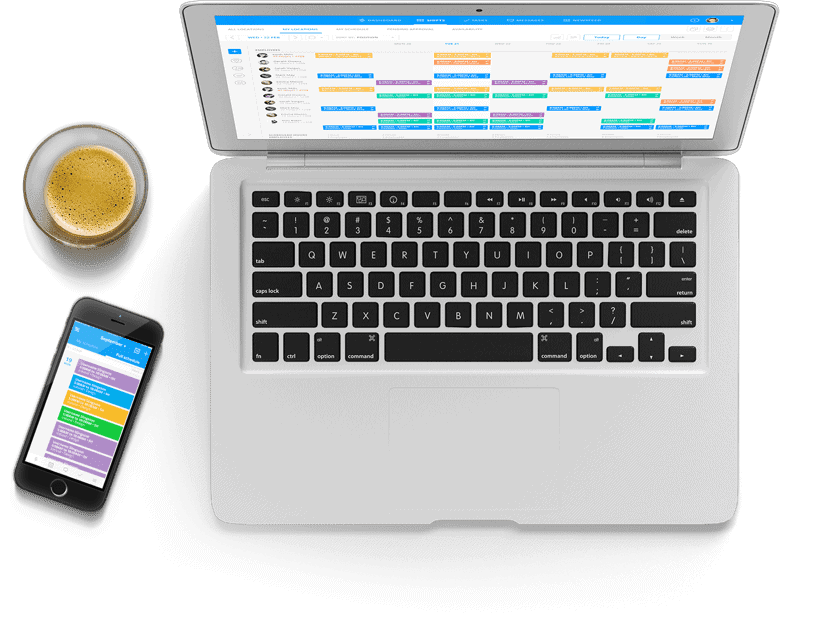Supplemental Wages Vs. Regular Wages: The Complete Guide
If you’re a business owner or manager in charge of payroll, you’ve probably ...

What is payroll tax? At first glance, payroll tax can be confusing and opaque for even experienced managers charged with calculating the numbers. However, correctly filing taxes is a necessary part of doing business in the United States.
In this article, we discuss the different types of payroll tax and the best practices that make them easier.

Payroll tax is a broad term that refers to a dollar amount employers withhold from an employee’s gross pay and send to the appropriate federal, state, and local authorities (e.g., the Internal Revenue Service (IRS)) on the employee’s behalf.
As we’ll discuss in the next section, the dollar amount in question is based on the sum of various percentages from different tax categories.
In addition to the broad term’s definition, it’s worth noting that payroll tax also refers to two specific taxes that are part of the total that all businesses withhold from their employees’ paychecks.
We’ll discuss those two true payroll taxes first in the next section.

The first true payroll tax that all businesses must pay is Social Security. The second is Medicare. Before going further, let’s discuss what sets these true payroll taxes apart from the other taxes applied to an employee’s paycheck.
True payroll taxes are used by the federal government to fund two programs: Social Security and Medicare.
Together, these two taxes appear as FICA deductions — which is an acronym for Federal Insurance Contributions Act (the law that created payroll tax) — on the employee’s final paycheck.
The other taxes lumped into the payroll category are earmarked for different purposes, including the general fund of the U.S. Treasury and unemployment.
So, just to be clear, when you use the term “payroll tax,” you’re referring to two things:
If you’re worried about being able to understand which of the two a speaker is referring to, the distinction will usually come out in the context of the conversation.
Now, let’s get down to the details of the payroll tax itself.
As of 2021, the tax rate for Social Security and Medicare (FICA) stands at 6.2% and 1.45%, respectively.
Depending on the employee’s W-4, your business will deduct 6.2% of the gross pay from the paycheck (for the first $142,800) to go to Social Security and 1.45% of the gross pay to go to Medicare.
Your business will then match the 6.2% and 1.45% for a total of 15.3% sent to the federal government.
Due dates for the various categories of payroll tax differ, but the most common — and the one that applies directly to Social Security and Medicare — is the 15th of the next month.
For example, February FICA taxes are due by the 15th of March.

In addition to Social Security and Medicare, employers are responsible for withholding a 0.9% Additional Medicare Tax on an employee’s wages and compensation that exceeds a threshold amount based on the employee’s filing status.
There is no employer match for the Additional Medicare Tax. As a business owner, you deduct it from the employee’s check, but you don’t have to pay an additional 0.9% as you do with the true payroll tax.
According to the IRS, an individual is liable for Additional Medicare Tax (and you must deduct it from their gross pay) if the individual’s wages, compensation, or self-employment income exceed the following threshold amount for the individual’s filing status:
For more details on the Additional Medicare Tax, visit the irs.gov website.

Like Social Security and Medicare, federal income tax is money you must deduct from an employee’s gross wages before you write their paycheck.
Income tax is not a true payroll tax — mainly because it goes into the federal government’s general fund — but it falls into the broad category of taxes that are applied to wages, salaries, and tips.
The amount you deduct from the gross pay depends on a number of factors, including:
Calculating federal income tax is a complicated task — even more so than calculating FICA — because the percentage deducted changes based on how much the employee makes, their job classification, and numerous other variables.
Typically, federal income tax on wages is due along with Social Security and Medicare on the 15th of the next month.
To ensure that you’re withholding the correct amount of federal income tax, talk to a tax professional in your area who is familiar with your industry.
Federal Unemployment (or FUTA for short) is a payroll tax paid exclusively by you, the employer.
Employers report and pay FUTA tax separately from federal income tax, Social Security, and Medicare taxes. And it’s important to note that businesses pay this from their own funds. Employees do not have it withheld from their pay.
Unlike the previous three types of tax, FUTA is due on different dates, depending on the amount paid. These dates are as follows:

Whether you’re just setting up your payroll system or you’re striving to make an existing system better, one of the best things you can do is talk to a tax professional.
They can help you understand the ins and outs of the various taxes that apply to your business.
The Internal Revenue Service’s website (irs.gov) is a wealth of information about payroll tax. We recommend reading this information in full or reviewing it with a tax professional to make sure you understand it fully.
In addition to making payroll tax clearer, the IRS website also provides a general idea of how to better structure your business’s payroll system.
As part of the payroll process, your business must keep a record of:
Keep these details (usually in the form of a timesheet) on hand for at least three years, along with other basic employee information (e.g., name, address, Social Security number, and occupation).

“What is payroll tax?” is a question every business owner has asked at one point or another. Getting control of it starts with getting control of the foundation on which it’s built: the payroll process itself.
In the past, payroll was often done by hand using pencil and paper, hard copy timesheets, and a calculator or adding machine. Now, business technology, such as Sling, does much of the work for you.
With Sling, from the moment your employees clock in, their data — including total hours, time-on-task breakdown, and overtime — is available and ready for processing.
At the end of the pay period, all it takes is a few clicks or taps to produce the numbers you need for easy payroll calculations.
You can then transfer the data in the blink of an eye to integrated payroll tools such as Gusto and ADP or produce reports — both digital and hard copy — and manually export them in a variety of formats to third-party payroll processors.
Once payroll is complete and all payroll tax has been deducted, reported, and sent to the government, you can import all the requisite numbers from your payroll processor for easy analysis and integration into future calculations and reporting.
That’s payroll tax processing for the 21st century.
And that’s just one aspect of what Sling can do for your business. To learn more about how Sling can help you manage your business better, organize and schedule your team, and track and calculate work hours, visit GetSling.com today.
See Here For Last Updated Dates: Link
This content is for informational purposes and is not intended as legal, tax, HR, or any other professional advice. Please contact an attorney or other professional for specific advice.
Schedule faster, communicate better, get things done.